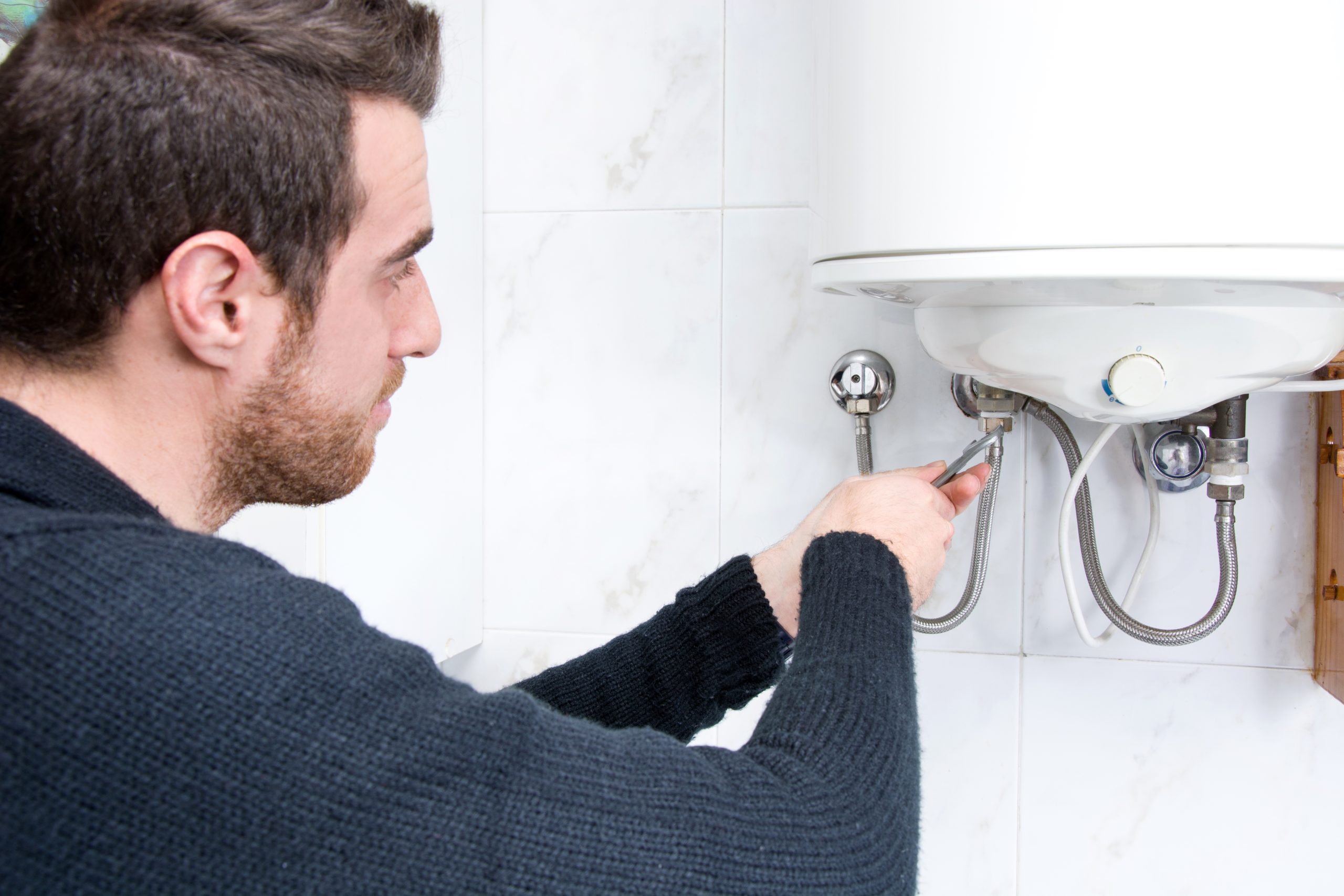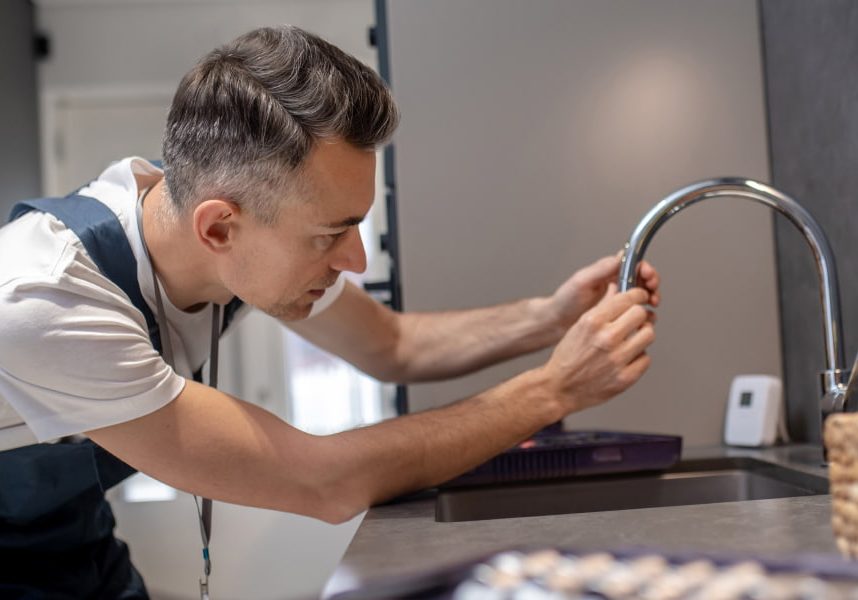How To Repair A Water Heater
Electric water heaters are essential appliances for heating water in homes. They are built with an insulated storage tank made of strong steel inside that helps to keep the water warm, which can later be used for personal and household work.
Electric Water Heaters are similar to their alternative, a Gas Water Heater that provides water but with the help of Natural Gas.
But what should we do when a water heater needs repair? Sometimes, we tend to ignore the fact that hot water heaters work 24/7 to keep up with our household’s needs until they stop working and spring a leak or stop heating water.
Generally, your electric water heater can have problems like low or no heating caused by various reasons, such as faulty heating elements or parts that need repair or replacement. Additional issues may be due to wrong settings, high home water pressure, or not focusing on regular tank maintenance.
In this article, we will discuss reasons that your water heater can damage and teach you about water heater troubleshooting.
“We recommend that only a professional attempt to repair a water heater!”
The first thing we do before troubleshooting a hot water heater is turn off the power to its circuit. An electric water heater is a high-voltage machine and can be dangerous to touch if it is not correctly power-cut. Our service technicians always check the appropriate connection to your water heater from your home service panel and turn it off.
How To Troubleshoot & Repair An Electric Water Heater
No Hot Water From The Water Heater
Why is my hot water not working? The most common complaint about water heaters is that they don’t provide hot water at all. This problem happens differently with Electric and Gas Water Heaters.
Firstly, look at what type of water heater you have so you can follow the troubleshooting steps:
- If you have a gas-powered water heater that is not heating the water, the issue may be related to the gas. Check its pilot light to see if it’s gone out. This usually happens by the gas valve, the natural gas supply, or, more likely, the thermocouple located next to the pilot light;
- If your Electric Water Heater is not heating the water, the issue is likely with the heating element. Using a screwdriver, you can replace one or both heating elements with a small effort. The replacement of the heating elements is inexpensive and can be purchased from a hardware store nearby;
- Check for the water heater’s circuit breaker in the service panel to ensure it hasn’t tripped. It’s often hard to spot a circuit breaker, so we always shut off both breakers for the water heater and turn them back on.
If a breaker is tripped, then this will reset it, and if the heater’s breaker is still not tripped, we need to wait 30 minutes for your water heater to recover and check for hot water. Suppose we don’t get any hot water. In that case, we may need to reset the high-temperature limit switch on the upper thermostat.
We follow these steps when resetting the water heater temperature:
- After turning off the water heater circuit breaker from the service panel.
- We use a multimeter to ensure no power is running to the hot water heater.
- Then, we open the access panel for the upside-located heating element of the water heater.
- Remove the plastic safety guard with precaution.
- Press the red color high-temperature reset button located above the thermostat.
- Re-install the safety guard, insulation, and access panel.
- Then we turn on the heater’s circuit breaker.
- Even if that did not fix the hot water heating issue, we have to test each heating element and replace it if necessary.
Insuffient Hot Water Supply
At least 70% of the water should be in the water heater. The demand for the hot water heater should be under the percent of hot water capacity. To balance the demand and supply, you can limit hot water usage by installing restrictors over showerheads, faucets, and taps, spreading out dishwashing, and doing laundry less often.
If your water heater unit produces less hot water than its capacity, it might have an issue with one or two of the heating elements. If a water heater is supplying adequate hot water or the water temperature rises and falls, it indicates a defect in the upper heating element.
Water Temperature Is Too Hot
Another common water heating issue is that your water heater is scalding at a high temperature, which can be harmful. It is likely due to the wrong thermostat temperature settings or a malfunctioned thermostat.
Here are the steps we follow to check the thermostat settings and to maintain the water heater temperature:
- Turn off the power of the water heater from the service panel.
- Remove the water heater access panel, insulation, & plastic safety guard.
- Use a voltage tester to check the thermostat for temperature settings or if there is any fault. The default heating settings of both thermostats should be equal and between 115 and 125 degrees.
- Configure the appropriate temperature on the thermostat.
Re-install the insulation, safety guard, & access panel. - Power on the water heater again from the service panel.
Water Heater Sprung A Leak
Any water leakage from the water heater needs to be addressed immediately. This clearly indicates that the water heater must be fixed immediately or replaced. Otherwise, it will become a mess quickly.
Water leaks are likely caused by leaking valves, hoses, or cracks in the water tank. When the water heater leaks, repairs don’t usually work, and the unit needs to be replaced.
How To Identify Where Your Water Heater Is Leaking
There are some Water Heater Leak issues that are not expensive:
- Check the drain tubes; if there is any water dripping, then it’s possible that the spring in the valve is corroded and the valve is not closing correctly. Additionally, check to see if there’s any water leaking around the threads. If it’s a slow, continuous leak, then it’s best to replace the relief valve. If the relief valve opens intermittently or even daily, it’s most likely due to normal water pressure expansion. This can be fixed by installing a diaphragm-type expansion tank on the cold water supply line. In these cases, it’s best to call a professional plumber;
- The drain valve can also be a reason that is used during regular maintenance to drain and flush the Tank. The valve is often made of plastic, which can crack over time. It’s recommended that a brass drain valve be installed as they are the most reliable. First, check if there is any water inside the outlet. Now check around the valve to see if any water is coming out of the threads, then replace the drain valve;
- Water can also leak from the cold supply inlet and the hot water outlet pipes. First, check the threaded connection to the Tank. Now, check each connection between the pipes. If there’s any water leaking, then it should be fixed;
- If you didn’t find water coming out from any connection, it could be the inner Tank. Remove the door cover; if the insulation is wet, the inner Tank may have rusted out. At this point, it might be best to install a new tank.
Water Is Discolored Or Smells Bad
The least common problem is if water from your water heater is discolored and your faucet water is a yellow, brown, or red type of color or has unusual odors. Suppose the water heater smells like rotten eggs. In that case, it’s likely due to the bacteria growing in the water heater, which is harmful.
This could also happen when your water heater tank has become corroded from the inside, or the water pipes in your home are an issue, and you need a repipe.
Water Heater Is Making Noise
Is your water heater making unfamiliar noises? Sometimes, the water heater makes disturbing noises, which could be due to the sound of boiling water. Calcium and lime are formed in the bottom of the burner in the hot water tank, and as the tank heats up, those calcium build-ups can make a sound like popcorn.
The most common reason for a noisy water heater is sediment that has started collecting at the bottom of the tank. The noisy sound is caused by the hot water bubbles rising through the sediment.
How To Fix The Water Heater Tank Making The Noise
You can drain the Tank to get rid of the sediment, or you can try to clear the Tank using a decent calcification on it. It would be a definite solution to fix the noisy water heater tank. We don’t recommend either of these solutions, and you probably need a new hot water heater.
When you need to keep your hot water heater working in top form, call us at Fischer Plumbing. Our technicians have a cumulative 40+ years of professional experience working on the major brand of water heating systems. They can quickly diagnose problems and apply effective solutions. When one of our experts is on the job, you can be confident that the job is done right.









